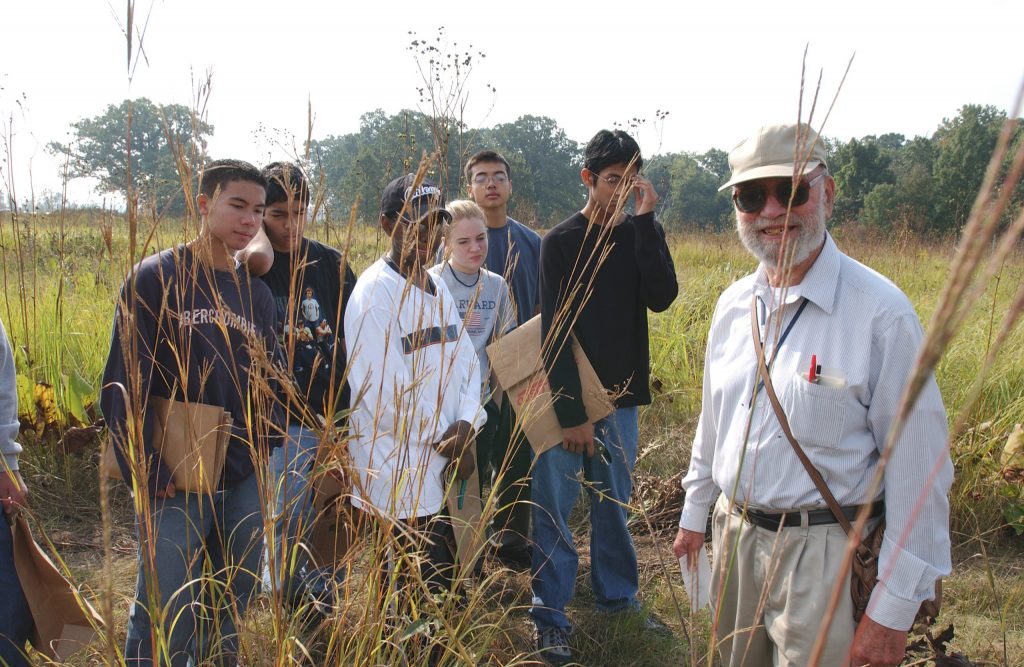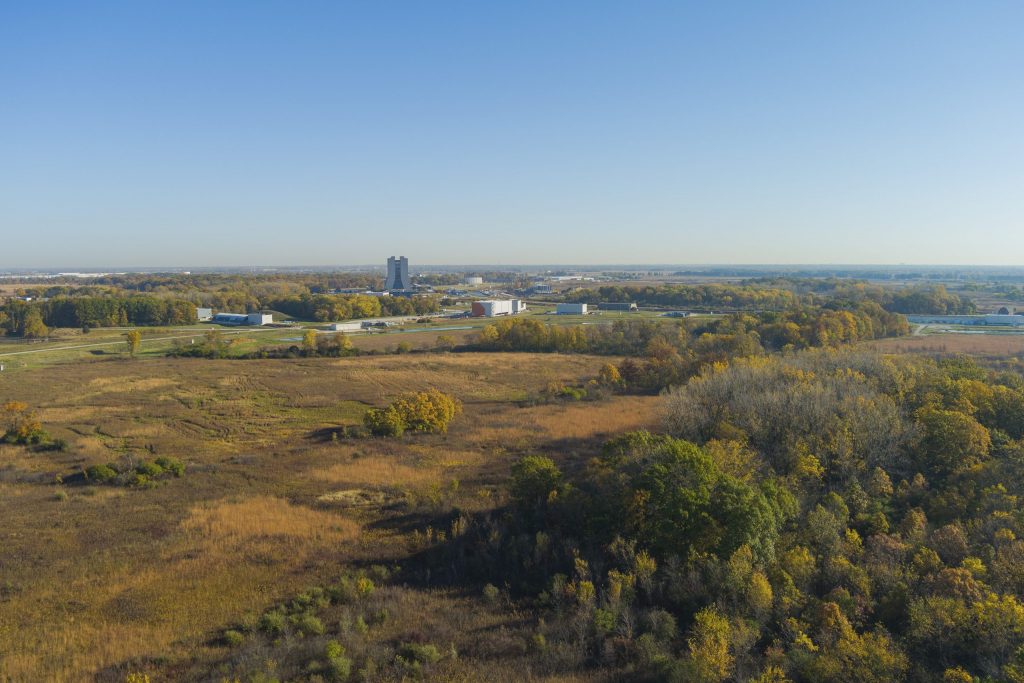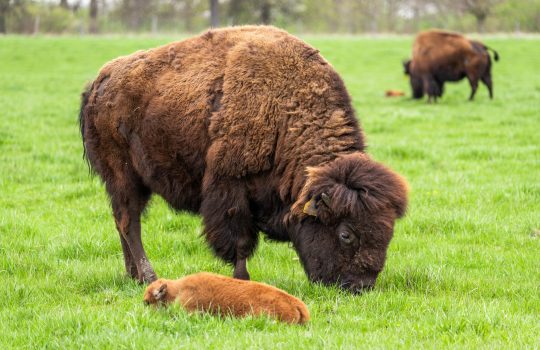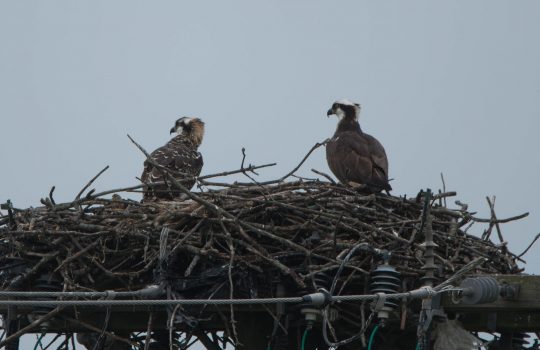With the approach of National Prairie Day — recognized on the first Saturday in June — volunteers and staff at Fermi National Acceleratory Laboratory will have even more to commemorate, as 2025 marks the 50th anniversary of prairie restoration on the grounds of Fermilab.
Fermilab’s prairie restoration initiative was built on the idea of responsible land stewardship by transforming the laboratory’s unused open spaces back into native prairie that once dominated the Illinois landscape. The restoration began humbly in a nine-acre patch within the Tevatron particle accelerator ring, guided by Robert Betz, a biology professor at Northeastern Illinois University. Today, it spans over 950 acres.
Central to this ongoing effort are volunteers from Fermilab Natural Areas, an outside not-for-profit organization whose work is coordinated with Fermilab employees. Their contributions include activities such as seed collection and invasive species control.
“Volunteers are truly the backbone of Fermilab’s prairie restoration efforts,” said Wally Levernier, Fermilab’s ecologist. “When employees and visitors see the natural areas, it is largely the way it looks because of the efforts started by Robert Betz and continued by volunteers and staff.”

Dynamic ecosystem
An ecosystem is a dynamic relationship between a group of species — including plants, animals, bacteria and fungi. Their coexistence shapes the landscapes we recognize, such as prairies, forests, woodlands, marshes and wetlands.
“Prairies were historically one of the predominant ecosystems in Illinois,” Levernier said. “Settlers often described the vastness and beauty of prairies. Today, only about 0.01% of Illinois’ original 22 million acres of high-quality prairie remains — just about 2,300 acres.”
Unlike forests or wetlands, prairies have a deep and dense networks of roots, with three-quarters of plant material existing underground. This hidden network plays a critical role in stabilizing soil, which helps prevent erosion, and in storing carbon. Organic carbon improves soil structure, enhances water retention and increases nutrient availability for plants.
“Grasses in prairies can have fibrous roots that reach 10 to 12 feet underground,” said Mitch Adamus, a Fermilab technician and former chair of the Prairie Committee. “That’s where plants and animals go to survive the winters.”

Living laboratory
Fermilab’s prairies have also become a resource for scientific research. Restoring a prairie from scratch gives scientists a rare opportunity to study how ecosystems gradually develop.
Since Fermilab’s prairie restoration was established in stages, this created what ecologists call a chronosequence — sections of land with similar soil and environmental conditions planted at different times that represent various stages of ecosystem development.
In the summer of 1985, soil ecologist and distinguished senior scientist Julie Jastrow from Argonne National Laboratory began studying this chronosequence to see how soil health evolved as farmland was restored to prairie.
“It turned out to be fantastic data,” Jastrow recalled. “We could track how the prairie changed the soil over time.”
As plants grow and the prairie ecosystem develops, ongoing monitoring and research studies have become crucial in finding insights into the health of the restored prairie.
One of the discoveries from studies on Fermilab’s prairies was how soil structure improves during the restoration. Jastrow and her team found that as farmland transitions back to prairie, the soil gradually forms what ecologists refer to as stable crumb structures, which help retain organic matter.
The network of pores that develop within and between these crumb structures, together with organic matter, help sustain the growth of prairie plants by promoting a healthy balance of water, air and nutrients in the soil.
Significantly, the research helped gain new insights into a prairie’s role in storing carbon. As prairie plants grow, their fibrous roots and associated fungal networks bind small soil particles into larger clusters, creating a foundation for long-term carbon storage.
“We found that healthy soil structure, particularly the formation of stable soil aggregates of various sizes, plays a key role in storing carbon,” Jastrow explained.
While these soil structures form relatively quickly — in less than 10 years — the Argonne team found the actual buildup of organic carbon takes much longer, possibly hundreds of years. Most of this stored carbon isn’t in visible plant debris but is associated with soil minerals, protecting it from rapid decomposition.
The path ahead
Even after decades of restoration, Fermilab’s prairies are still evolving. Compared to untouched, native prairie — some of which can be found in small patches on Fermilab’s site — restored sections still contain less organic carbon, but they are steadily improving.
Over the years, land managers and ecologists have gained valuable insights into what works and what doesn’t in prairie restoration. “Originally, we thought prairies would become self-sustaining much sooner,” said Levernier. “But we now know that restoration is a long process that requires active management and patience.”
Part of maintaining the prairie involves conducting periodic prescribed burns. These carefully controlled fires, managed by trained staff, replicate the natural disturbances that historically shaped prairie ecosystems and help stimulate new plant growth.
Despite challenges, the long-term benefits of restoring the prairie are undeniable.
“In the end, restoring native grasslands is one of the most effective ways to improve soil health and store carbon,” said Jastrow. “But it’s a slow process that requires patience and long-term conservation efforts.”
Fermi National Accelerator Laboratory is supported by the Office of Science of the U.S. Department of Energy. The Office of Science is the single largest supporter of basic research in the physical sciences in the United States and is working to address some of the most pressing challenges of our time. For more information, please visit science.energy.gov.



